The UK's leading provider of professional pensions trusteeship and governance services, Independent Governance Group (IGG), today announces several new senior level appointments.
Mike Kirby assumes the role of Non-Executive Chair, having previously worked with ECI as CEO of KB Associates. Mike will work closely with Andrew Bradshaw and the Executive Team to oversee IGG’s strategic direction and ensure that the Group continues to evolve its offering. With over three decades’ experience in asset management and financial services, Mike brings deep expertise in governance, compliance and risk management to IGG.
Chantel Garfield will join IGG as CFO, with an extensive background in financial operations. Prior to this, Chantel served as Group CFO for several years at Charles Taylor, a claims and technology solutions provider to the global insurance market. In addition, Chantel spent a decade at LexisNexis, a global provider of legal, regulatory and business information, ultimately as Head of Financial Planning & Analysis (FP&A).
News
28/03/2025
Read Time: Min
IGG welcomes new Non-Executive Chair and CFO for next phase of growth
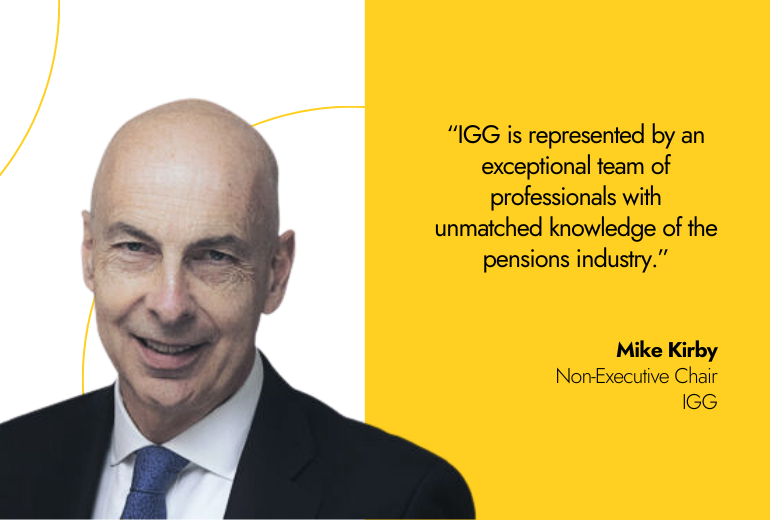
What was front of mind for CEOs and HR leaders at the HR Tech Europe Conference in Amsterdam? Isabella Fox who attended the March event shares her key insights from the conference:
It is clear that AI remains the ultimate buzzword in European HR tech. However, the landscape has evolved, with AI now part of a continuous transformation as opposed to the single catalyst it was considered to be a few years ago. The impact on the sector is beyond doubt – it is the pace of change which is being debated.
Speakers from the likes of Coca-Cola and Volvo, or Mercer and Deloitte, all shared similar views on some key trends permeating the sector:
1. Human-centric AI
Investment in AI continues, although it has transitioned from being perceived as innovative to now being an enabler. The reality of AI being utilised effectively by HR teams, however, remains behind the curve. Whether it is organisational structure or data, most businesses don’t have sufficiently stable foundations to maximise AI’s efficiency, resulting in the risk that AI is layered into businesses without improving productivity. Many businesses are still spending a lot of time fixing interfaces or grappling with data.
This provides an opportunity for tech/AI providers who can create human centric solutions. Clearly even digitally advanced firms are still doing a lot of HR activity in very manual ways – i.e. recruitment, despite it being one of the first areas to adopt AI solutions. The solution in today’s environment can’t just be whether the tool is innovative, it is whether it is easy to adopt by the end users.
2. The importance of the right Tech Stack
The HR tech stack is vast. In an ideal world, a core HR Information system would be integrated across some key areas:
- Talent acquisition and recruitment
- Performance management and employee development
- Learning and development
- Employee engagement and wellbeing
- Payroll and benefits
- Analytics and reporting
- Collaboration and communication tools
However, usually an HR tech stack evolves in a slightly less ordered way as point solutions are needed, which means they aren’t always fully integrated. As businesses grow, they need to assess whether their HRIS is sufficient for them. There is an efficiency and usability experience factor for both employers and employees that is causing change in the sector, as HR teams focus on streamlining systems. This in turn is driving better employee experience, improved compliance, and data driven decision making.
3. The resilience of HR teams
As we discussed last week in our look back on the 5 years since the pandemic, the period since 2020 has been tumultuous for HR teams. The shift to remote working as well as a wave of job changes have kept teams incredibly busy.
The pace of change for HR teams doesn’t look set to slow down. There is still a lot of uncertainty in the market and with the advent of AI there has been additional complexity to consider. Overall, the consensus at the conference was that these teams have had to show remarkable resilience in recent years. The future is bright with AI providing the promise of a reduction in manual tasks, but this is not immediately on the horizon for most teams.
4. Employee wellbeing is still a top priority
Wellbeing remains a key focus for those in HR across all job roles, with the likes of Coca Cola having wellness rooms across its factories. For HR Tech platforms, modules such as employee engagement and wellbeing are becoming increasingly important for an HRIS to accommodate.
The first step to enhancing wellbeing is tracking it with monitoring, with HR platforms providing new and easy ways to understand employee sentiment. That increased monitoring inevitably has led to more demand for levers to pull to improve engagement. Changing regulation/labour laws is also a driver in some industries, but for the most part it is employee expectations that continue to grow, and HR tech is responding to that need.
We’ve seen this ourselves at portfolio company, Ciphr, who acquired Avantus at the end of last year, giving HR teams the ability to pick the right mix of employee benefits that resonate with their people, including health and wellness schemes, lifestyle rewards, discounts and savings and more.
Insights
27/03/2025
Isabella Fox,
Stephen Roberts
Read Time: Min
What is front of mind for the HR Tech sector in Europe?
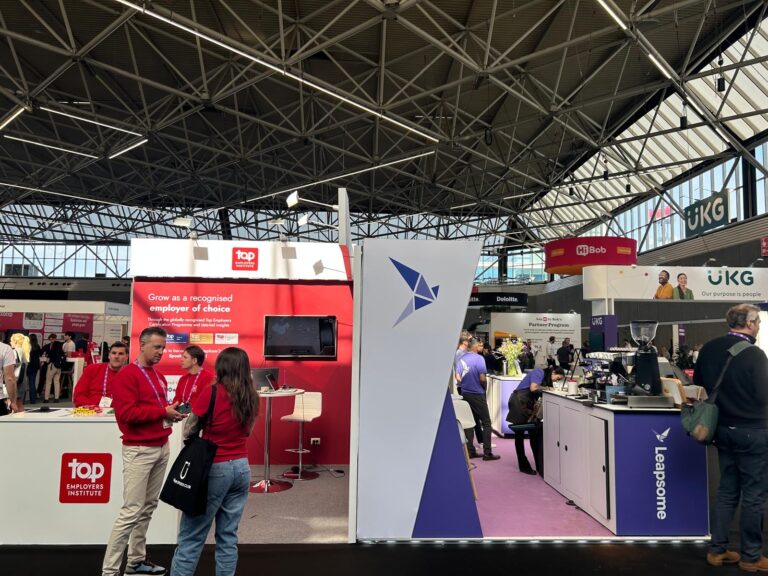
ECI Partners, the leading mid-market private equity firm, has promoted George Moss to its Investment Committee, with effect from April 2025.
George has been a Partner in the Investment Team since 2015, leading investments across ECI’s established subsectors, specifically in HealthTech and Travel. During his 17 years at ECI, he has been instrumental in many successful exits including 4Ways, Travel Chapter, CarTrawler, Citation, Reed & Mackay and Great Rail Journeys. George currently sits on the Board of two of ECI’s portfolio companies: Avantia, a high growth specialist home insurance MGA; and TAG, a leading global travel management company.
News
24/03/2025
Read Time: Min
ECI promotes George Moss to Investment Committee

It’s hard to believe it’s been five years since the UK went into its first COVID-19 lockdown. HR teams and businesses did a fantastic job at this time of rapidly shifting to a work from home model and supporting their teams during a difficult period of repeated lockdowns. Having adapted at pace, we have since seen companies try to find the right approach in ‘the new normal’, including often rolling back some of the flexibility that had been offered during the pandemic. At this five year milestone, we take a look at what hybrid working looks like in 2025, how HR teams are balancing the demands of employees vs the needs of employers, and what we predict is likely to happen over the next five years.
1. Fully remote to fully in office – what is the standard approach we see across our portfolio?
There’s no single approach to remote and hybrid working as it varies by business model, geography, and access to talent. That said, there’s been a clear shift: while some businesses continue to operate fully remotely, many UK companies are rolling back flexibility, with hybrid models becoming increasingly weighted towards the office. As the talent shortage has eased, the balance of power has shifted back to employers. Companies like Disney, Twitter, and KPMG - once very vocal about flexible work - are now speaking out about reversing their policies.
For businesses looking to make hybrid work long-term, structure and communication is key. Anchor days, better discipline in online meetings, more manager check-ins, and regular all-hands gatherings are all ways companies of are building connection even when including remote working. Clarity over expectations is fundamental to it working well. HR leaders are focussing on being consistent in their messaging and setting clear expectations from the start.
2. What has driven the trend towards more in office time?
The move towards more in-office time isn’t just following the market. Hybrid working has benefits, from better work-life balance to supporting talent retention and broadening recruitment opportunities. However, fully remote work has its challenges. Many businesses have seen a decline in culture and collaboration, with fewer opportunities for mentoring, informal learning, and career progression - particularly for junior employees. Without in-person interactions, visibility decreases, and talent development can slow.
Collaboration is also harder remotely. Spontaneous discussions are replaced by rigid online meetings, and with Microsoft reporting a 153% rise in meetings since the pandemic, many employees find themselves with clogged diaries, impacting engagement and productivity.
3. How are HR teams balancing the needs of employees and employers
Enforced work from home during the pandemic combined with a talent shortage, meant many HR teams had to offer considerable flexibility to attract and retain talent. Now, many face the challenge of rolling back remote work without creating a two-tier system.
With hybrid work still largely preferred by employees, communication is key not just in setting expectations but in explaining why office time matters. If collaboration is the goal, but employees spend the day on Teams calls, engagement will drop. Senior leaders must set the example, policies must be clear, and office time should feel purposeful.
At the same time, rigid return-to-office policies shouldn’t be reactive or based purely on leadership preference. The best HR teams gather feedback, track performance impact, and adapt accordingly. The shift to flexibility also isn't just about office versus work from home. Claire Webster, HR Director at Avantia comments that, "At Avantia, flexibility isn’t just about where employees work - it also includes different working patterns such as part-time schedules, compressed hours, and even the option to work overseas, particularly for those with family outside the UK."
4. Work from home is still a useful tool in the HR toolkit
As larger companies like Google and Meta shift back towards in-office work, it’s important to remember that remote work remains a powerful differentiator for mid-market businesses looking to attract talent.
Even high-profile return-to-office announcements can be misleading, we see Google’s handbook still embracing hybrid working, with flexibility based on need.
Many mid-sized companies have found that maintaining remote work options helps them stand out in the hiring market. For example, Claire has seen the benefits firsthand at Avantia. She explains, “We’ve been supportive of flexible working measures for years, as we believe it boosts work-life balance, productivity and engagement while reducing employee turnover. Our flexible working policy plays a key role in our hiring strategy, helping us attract top talent who may require flexible arrangements to perform at their best. It has also played a crucial role in recruiting and retaining women across all business areas, including senior positions, by supporting work-life balance and career progression. In 2019, women made up just 27% of our workforce; by 2024, that number had risen to 45%."
Claire adds, "The benefits of flexible working for both employers and employees are clear - from happier, more engaged and productive teams to a more competitive and attractive job market offering."
While it’s a relief that the pandemic now feels like a distant and strange memory, its impact on the way we work is still being felt by both employees and employers. Communication, consistency, and clear structures have been key to making remote, hybrid, or in-office setups work.
Insights
20/03/2025
Rich Pearce,
Tamsin Webster
Read Time: Min
Hybrid working – five years on

The allure of the US market is undeniable for businesses looking to expand internationally. Its size and diversity offers immense growth potential, however scaling in the US also presents its own set of challenges and opportunities.
At the 2024 Growth Summit, a panel hosted by ECI’s North America Growth Specialist, Brett Pentz, featured the team at ECI portfolio companies Moneypenny and Peoplesafe, who shared their insights in unlocking growth in the US.
In this article, we’ll explore key takeaways from the panel discussion, focusing on strategies for market entry, differences between the UK and US markets, and how businesses can adapt their approach to achieve sustainable growth across the Atlantic.
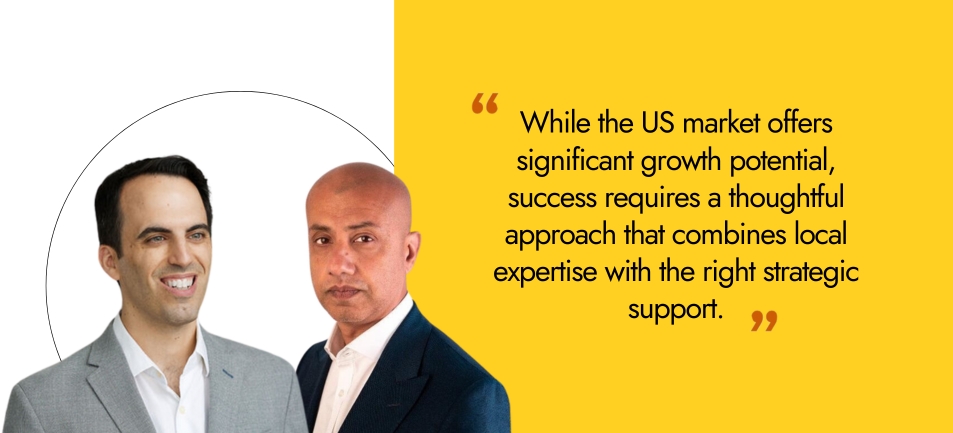
Entering the US market: Organic growth vs acquisition
One of the first strategic decisions businesses face when entering the US market is whether to opt for organic growth or pursue acquisitions. Prior to their investment from ECI, Moneypenny decided to expand organically as it didn’t create such a big cash demand on the business. They set up a small office in Charleston, South Carolina in 2015, with a couple of employees and a lean digital-first strategy. The early days were challenging, but the company’s decision to focus on organic growth allowed them to test the market and refine their approach as they grew.
With a couple of desks from IKEA and crossed fingers, Moneypenny’s entry was resourceful. Despite the early hurdles, their US presence has flourished, and the proof of concept meant they were well placed to go on and make subsequent North American acquisitions. Moneypenny now employs 250 people in Atlanta and serves 5,000 clients, thanks to a mix of organic growth and acquisitions.
By contrast, Peoplesafe, the world’s largest workforce safety solutions provider, took an acquisition-driven approach to entering North America. After defining their strategy, the company’s acquired a North American business just over a year ago, giving them a strategic foothold in the market.
Differences in market dynamics: UK vs US
One of the biggest challenges of operating in North America is understanding its scale and complexity. In reality, it’s like dealing with 50 different countries, with each state operating under its own set of regulations and market dynamics. For businesses, this means that a one-size-fits-all approach is unlikely to work.
One key lesson for Moneypenny was the importance of targeted marketing. In the UK, a sector-focused approach had served the company well, but in the US, the vastness of the market meant that they had to be more precise in selecting regions and industries. Initially, they made the mistake of spreading themselves too thin at first, with the company’s early marketing strategies not localised enough to capture the nuances of different US markets.
For Peoplesafe, it was important to understand the different use cases and local pieces of regulation and legislation that would support the adoption of its solution. ECI’s Brett Pentz supported Peoplesafe’s North American team to identify the most attractive verticals and states to enter organically.
Building the right team and company culture
Expanding into the US also requires building a strong team and effectively blending company cultures. Hiring locally while maintaining the core values of a UK-based business is vital. For Moneypenny, a critical turning point was when they hired a CEO of North America, who helped them navigate the cultural differences between the UK and US offices. However, the small details matter. Moneypenny had to adjust everything, from their dress code to the way they engaged with our US team. It’s not possible to simply transplant UK culture into the US.
The same sentiment was echoed at Peoplesafe, but with the added insight that building trust with remote teams is crucial. Virtual meetings alone are not enough to create a strong sense of connection. Teams need to be present as face-to-face interactions help smooth relations and build a much-needed personal rapport in leadership transitions.
Finding an investor who can help
ECI’s US presence played a key role in North American expansion for Peoplesafe and Moneypenny. From identifying M&A opportunities to providing strategic support, having an investor with an understanding of the market and boots on the ground can make a big difference. For Peoplesafe, ECI’s data-driven approach to market research helped guide their decisions on which states and sectors to target, with detailed research and analysis. For Moneypenny, our network and expertise enabled Moneypenny to secure off-market deals that significantly boosted their US presence.
Final thoughts: Lessons learned
Being prepared for a learning curve is a recurring theme when discussing entering the North American market. The approach can’t be rushed, with time and resource needed to fully understand the market and a mindset that’s willing to adapt. Businesses should not underestimate the value of trust - whether it’s with customers, employees, or acquisition targets, and building strong relationships is key. Especially in a market as vast and competitive as the US.
While the US market offers significant growth potential, success requires a thoughtful approach that combines local expertise with the right strategic support. For businesses considering expansion into the US, the experiences of Moneypenny and Peoplesafe provide valuable lessons on how to unlock this growth potential while avoiding common pitfalls.
Insights
18/03/2025
Read Time: Min
Unlocking US growth potential

In our latest Quick Fire, we chat with ECI’s Investment Associate, Ludvig Hamilton, about his journey into private equity, the skills he’s honed since joining, and his dream life as Ash Ketchum.
Q: You’ve been at ECI for six months now. Has it been as expected?
My experience at ECI has been exactly what I hoped for. From my first interactions during the interview process, I could tell the culture here was something else, and that impression has only been reinforced since joining.
There’s a strong sense of collaboration, no sharp elbows, and a shared mindset of winning and losing as a team. Everyone is a real team player, and that’s been one of the standout aspects of my time here.
Q: With a background spanning investment banking and corporate finance, what skills have been the most valuable in your role at ECI?
Coming from the sell side, I was already familiar with many of the skills used in investment banking and corporate finance, but the way they’re applied on the buy side is quite different. Understanding how to construct and assess a buy side investment case with rigour has been a big and exciting shift for me. The process behind actually "legally" investing in a business, moving the money, and structuring transactions efficiently, has been a big learning experience.
I joined ECI just as they were executing four deals, so it was a real baptism of fire. It was fantastic to be able to dive straight in and support the Croud team.

Q: You’ve studied and worked internationally, how has that shaped your perspective?
Studying and working in different countries has given me useful perspectives and helped me adapt to different ways of working and communicating. I was born and raised in Sweden, but I’ve also spent time abroad, studying in Canterbury, UK, during high school, doing an internship in Zurich in 2015, and later living in Paris for half a year.
It gives you a more sensitive barometer for cultural nuances. One thing I’ve particularly noticed from living and working abroad is how people express themselves differently. In the UK, I’ve found that people choose their words very carefully. Other places can be much more direct, so you have to adjust to both, that can be very important.
Q: What excites you most about working with ambitious business leaders?
I find it really rewarding to see people succeed, whether that’s a management team I’m working with or my own team. I personally find success motivating, and I love seeing people rewarded for the outcomes they’ve worked hard to achieve. I feel that’s one of the best things about the industry. You’re part of the journey, helping shape plans and seeing them turn into real growth
Q: Any predictions for the European M&A market in 2025?
Looking at the Nordics, the last couple of years people have been cautious due to economic uncertainty, and that cautious approach has carried into 2025. Because of this, I expect the first half of the year to be fairly slow in terms of deal activity.
That said, there are growing signs that things are starting to pick up. Many LPs are looking for liquidity and with many private equity portfolios reaching maturity, I think the pressure to exit is building. Many investors have seemingly been holding off, but eventually, deals will need to happen. So, like the UK, I expect deal flow to improve in the second half of 2025, with 2026 looking stronger. I’ve noticed a clear increase in deal pitches, so I would expect market activity to be picking up towards the back end of the year.
Quick Fire with Ludvig:
If you could swap lives with anyone for a day, who would it be?
Ash Ketchum, would be fun to be a Pokémon trainer roaming the wild in search of new Pokémons.
What’s one food you could eat every day and never get bored?
It has to be a hamburger. There’s so much flexibility, whether it’s a classic cheeseburger, something loaded with toppings, or an entirely new flavour combination. There’s always a way to keep it interesting.
If you could visit any country you haven’t been to yet, where would it be?
Argentina has been on my list for a long time. I’d love to explore Patagonia and hike through the landscapes. It’s one of those trips I know I have to do at least once.
What’s your go-to way to unwind after a busy day?
Not the most exciting answer, but I love working out to clear my head and then cooking a proper meal. My go-to dish is bulgur wheat with coriander, served with boneless chicken legs cooked in honey and soy. Finished with a topping of Greek yoghurt.
Insights
13/03/2025
Read Time: Min
“Quick Fire” with Ludvig Hamilton

International Women's Day on 8th March is a global celebration of the social, economic, and cultural achievements of women. This year's theme, 'Accelerating Action', focusses on driving progress towards gender equality and inclusivity. To celebrate the day, we asked our portfolio and some of the ECI team to share the initiatives they've put in place to help make a difference.
While change doesn't happen overnight, real progress comes from continuously building the right initiatives, structures, and conversations that help drive businesses forward. From employee-led communities and leadership-driven change to meaningful training and workplace policies, these actions are driving real impact:
Claire Williams, COO at Ciphr
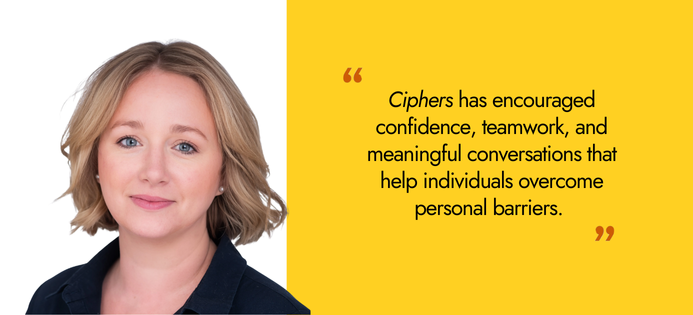
"One of the most impactful initiatives we've introduced at Ciphr is Ciphers, our employee-led group designed to create a safe, supportive, and collaborative space for women.
Through Ciphers, women can openly discuss key topics like health, personal safety, and workplace challenges, all in a setting that encourages confidence, teamwork, and meaningful conversations. What makes it so powerful is that it's driven by the group's own members, creating a space where everyone has a voice and, more importantly, is heard.
Beyond the support and shared experiences, what stands out most is the action it generates. Every challenge raised is met with compassion and, in true female style, always ends with an action plan. It has been a joy to watch and be part of this community, seeing it drive positive change and personal growth every day."
Fiona Moore, Head of ESG at ECI

"The fuel that drives action on gender equality is senior buy-in. At ECI, this is a topic led by, and important to, the Managing Partners and that means initiatives are promoted and embedded from the top. That includes individuals from that senior team helping to design our DEI strategy, undertaking training around key topics, and being part of internal discussions and assessments tracking ECI against Level20 frameworks.
The private equity gender balance is not where one would hope, and that includes at ECI, particularly when aligned with seniority, so we know there is still a long way to go to make further progress. However, this being a collective journey that we are on, rather than the remit of the ESG or HR team, makes a fundamental difference to successful change."
Debbie Martin, HR Manager at Peoplesafe

"Creating a more inclusive workplace is about taking real, everyday actions that make a difference. At Peoplesafe, we view DEI with utmost importance and believe training is the best way to drive positive change. To support this, all employees receive DEI training as part of their onboarding process, while managers receive additional unconscious bias and sexual harassment training. We also actively promote inclusivity by being Menopause Friendly employer, providing sanitary stations in our toilets, and ensuring equal pay for equal work through annual pay audits.
This commitment is reflected in our Great Place to Work scores, with 96% of employees feeling treated fairly regardless of gender and 94% feeling welcomed when they joined the company. But gender equality is an ongoing journey, not something that changes overnight. That's why we're working on developing a formal DEI strategy to capture our current efforts and drive continued progress, including initiatives that challenge and reshape attitudes towards women."
Tamsin Webster, Head of People at ECI
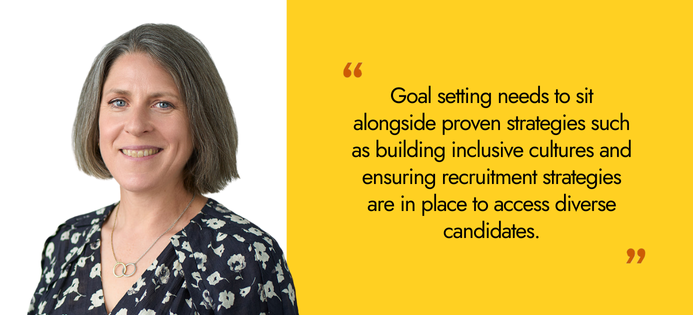
"I am really behind this year's theme of 'accelerate action', emphasising the urgency of making faster, more effective strides toward gender equality. Covid 19 saw a step backwards in many areas and it is my sincere hope that I personally and we collectively can implement meaningful change towards equal pay, opportunities and representation.
There's strong evidence that goal setting, and transparency and accountability around those goals, achieves results. We see this in the FTSE Women Leaders Review, with women board members in the FTSE 350 now at 43%, up from only 9.5% in 2011. Broadening this approach across a wider spectrum of business is strongly recommended. Goal setting needs to sit alongside proven strategies such as building inclusive cultures, ensuring recruitment strategies are in place to access diverse candidates, and that there is a focus on developing all talent to fulfil their full potential. It is the role of HR and senior leaders to proactively challenge the unconscious biases that may be holding women back."
Wendy Swash, COO at Moneypenny

"Creating an inclusive workplace starts with listening, which is exactly what we've found at Moneypenny. Real progress on gender equality and inclusivity comes from truly listening, not just hearing, but understanding and acting on what people are telling us.
Our unique structure creates and nurtures a culture where everyone's voice matters and ideas can be shared freely. This openness has shaped our training programs and employee groups, ensuring they're meaningful and reflect what our people actually need.
Because when employees feel heard and valued, they feel empowered to grow, and that's how we accelerate action."
Insights
07/03/2025
Read Time: Min
Accelerating action on International Women’s Day
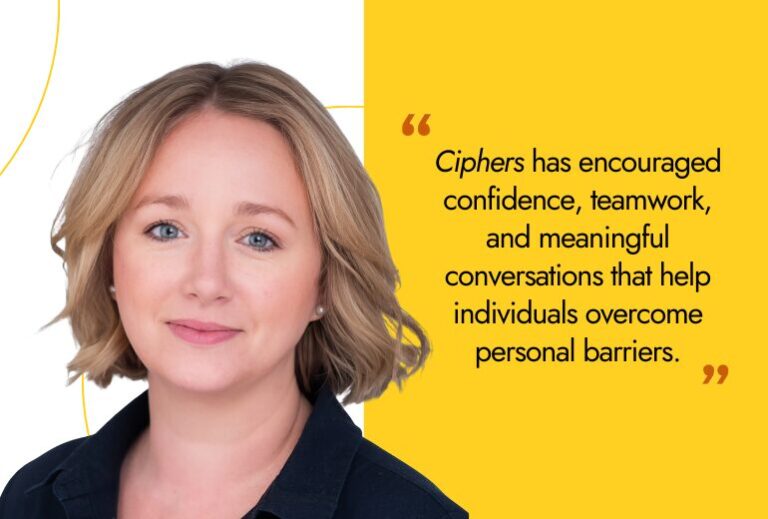
ECI has supported its portfolio to make 80+ acquisitions, which means we’ve seen the power of an effective acquisition strategy. We’ve previously discussed the importance of the right M&A strategy, but the M&A market is highly competitive. How do you turn that strategy into successful execution? The ECI Origination Team, who are on hand to support management teams throughout the entire life cycle of acquisitions, and our portfolio, share the top five secrets they’ve learned.
1. Smart use of technology
Technology can be a supercharger for buy-and-build strategies. Research is often done manually, involving extensive data collection, which is then managed in a spreadsheet alongside an M&A pipeline (and sometimes left to gather dust!). This kind of work is ideal for automation. But what does that look like in practice? Skyler ver Bruggen explains how Amplifind™360 helps portfolio companies manage their M&A pipeline more effectively.
“Amplifind™360 is designed to help our portfolio companies track and manage their pipeline of targets while also enriching their data from market mapping. It’s not a sourcing tool, but rather a way to provide valuable insights.
Managing an M&A pipeline in Excel can be inefficient as data quickly becomes outdated, and collaboration is difficult. With Amplifind™360, we’ve created a platform that makes this process far more seamless and interactive. It enables real-time collaboration, keeps information structured and accessible, and ensures that companies have a clearer, data-driven view of their opportunities. We’ve seen that moving to a more dynamic system like this is a step up for our portfolio companies and has helped make their M&A processes more efficient.”
2. Win strategies
Once you know your top targets, how do you change your strategy to effectively win the deal? Skyler ver Bruggen, Director in ECI’s Origination Team, not only thinks through these strategies for ECI’s own pipeline, but also works closely with management teams to think through effective strategies. She comments:
“Firstly, your win strategy may differ between ‘on market’ and ‘off market’ acquisitions. This will influence the speed at which you’ll have to move, and the competitive dynamics. In both cases, it’s important to think about the different stakeholders. One thing I’ve found is that it’s important to give yourself some space outside the usual deal conversations to do this, and make room for some ‘blue sky thinking.’ The relationship is key. Who are the most important stakeholders and how well do you know them? If there are gaps, how can you do more? Then think about what motivates each of the stakeholders before putting forward an offer. Will your offer meet those motivations? Understanding your M&A pipeline as a whole also plays a role. How important this acquisition is to your growth strategy? If it has scarcity value or brings a product or capability you need, that will influence what price you can pay to win.”
3. Effectively unlocking targets
Everyone loves the idea of an off-market deal - it's often seen as the ideal outcome. But in reality, that's not always possible. Paul Burton, Chief Strategy Officer at Commify, explains why long-term relationship-building is the key to success in M&A:
"Everyone loves off-market deals - that’s always the nirvana. But let's be practical; it's not always possible. You can't force someone to sell if they’re not ready, so for us, it's really about building long-term relationships.
Whether a deal ends up being off-market or turns into a more structured sale process, the best outcomes come from identifying a business early, developing trust with the owners, and not being pushy. That relationship-building is crucial. This might be my day job, but for most business owners, selling their company is a once-in-a-lifetime decision and far outside their comfort zone. Having that empathy, showing them you're the right partner, and being their preferred buyer when the time is right puts you in the best position - no matter what the process looks like.”
4. Incorporating culture
When assessing an acquisition target, cultural fit is one of the hardest and most crucial factors to evaluate. A well-aligned culture makes integration smoother, while a mismatch can create long-term challenges. Andrew Collis, CFO at Moneypenny, shares his perspective on why cultural alignment and communication are key:
“Having a clear plan is essential to ensure everyone is aligned. If management is staying, it's really important that they buy into that plan. If you want them to stick around, they need to feel involved. Listen to them, respect their ideas, and recognise that they know the business better than anyone.
Another big lesson we've learned is the importance of winning the hearts and minds of the staff who are staying. Take the time to engage with them, explain what joining a larger group means, why the business was acquired, and what opportunities it creates for them. Whether it's career progression, stability, or new resources, helping them understand the bigger picture makes a real difference. It's something we've focused on more over time, and it's been a key part of making integrations successful.”
5. Integration
So, you have a hit! You have successfully made the acquisition. Now the hard work starts. Effective buy and build is all about integration and having a repeatable and scalable process. As CFO at Moneypenny, Andrew Collis has overseen four strategic acquisitions since our investment. How has he put successful integration at the heart of M&A?
“For successful integration, communicating a clear plan is key. This should cover everything from communications to staff, communications to customers, system migration, technology, and bank accounts. Each item within the plan should have a clear owner. Regular project communication is vital as the plan is executed. There will be bumps in the road along the way but having regular project meetings will allow any issues to be resolved effectively and as a team. At the end of the integration assess its success against the criteria initially laid out in the business case, and finally take forward and document the learnings for the next acquisition (as there will be learnings!)”
Insights
06/03/2025
Skyler ver Bruggen
Read Time: Min
5 secrets to effective M&A

